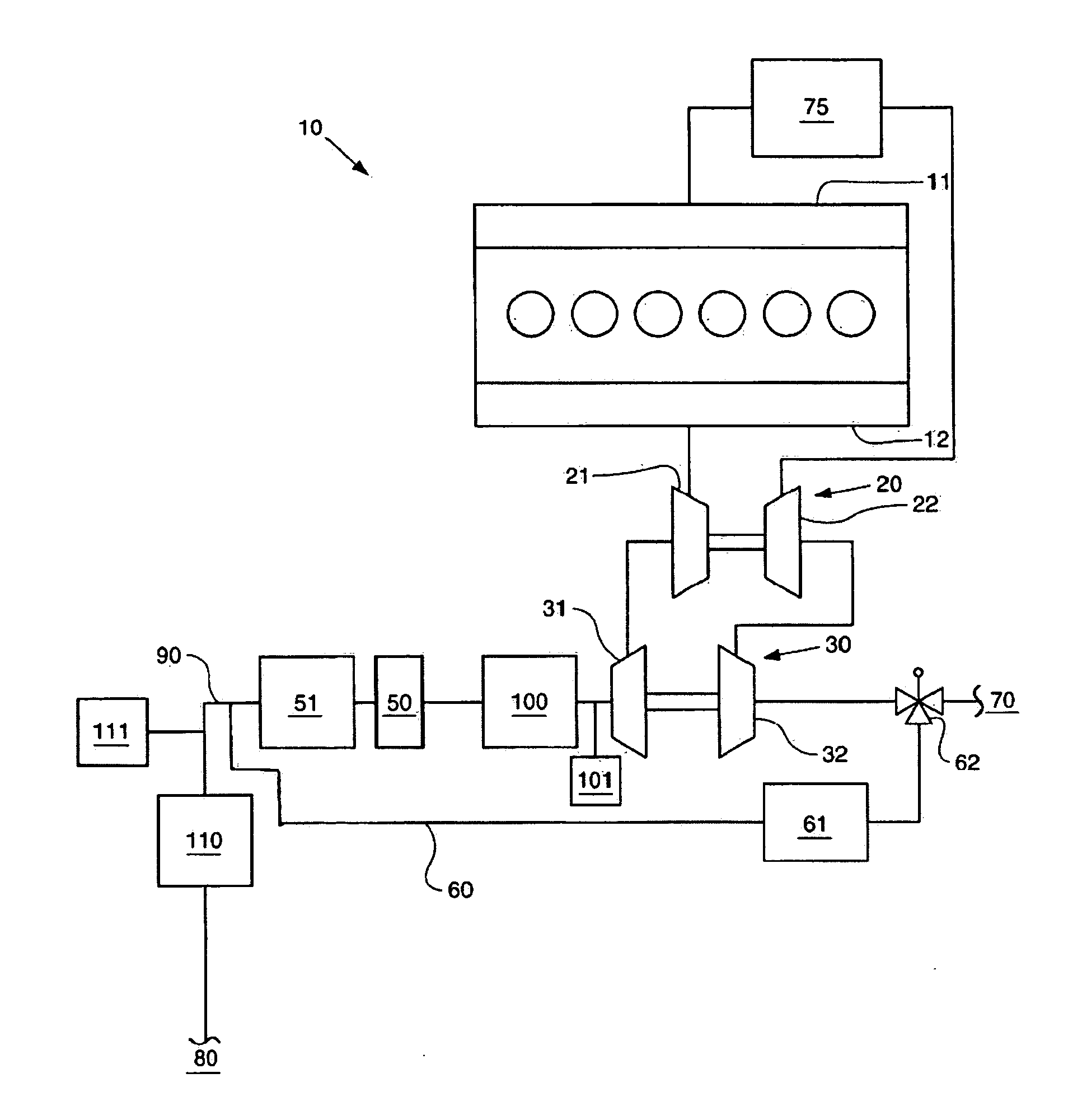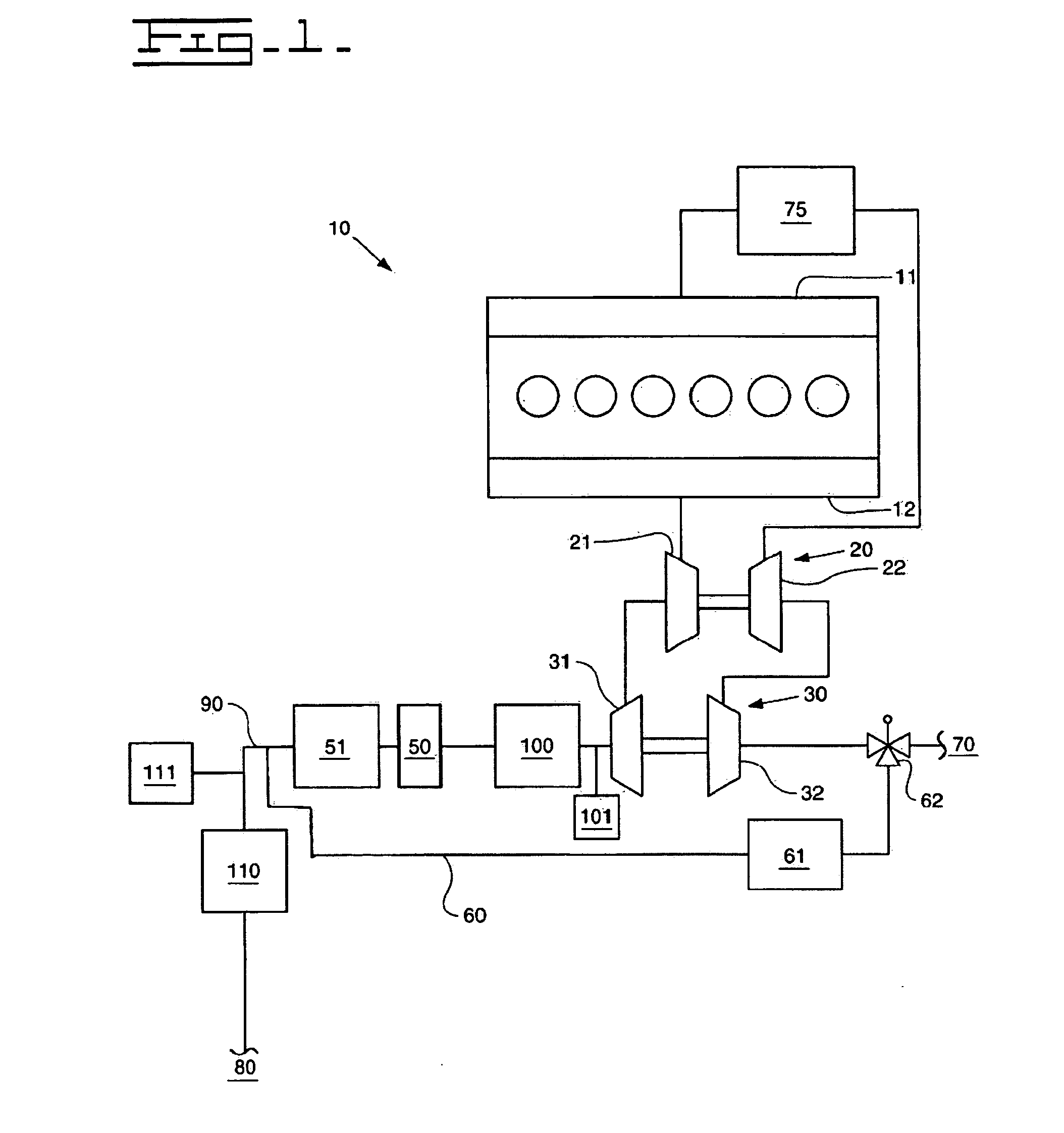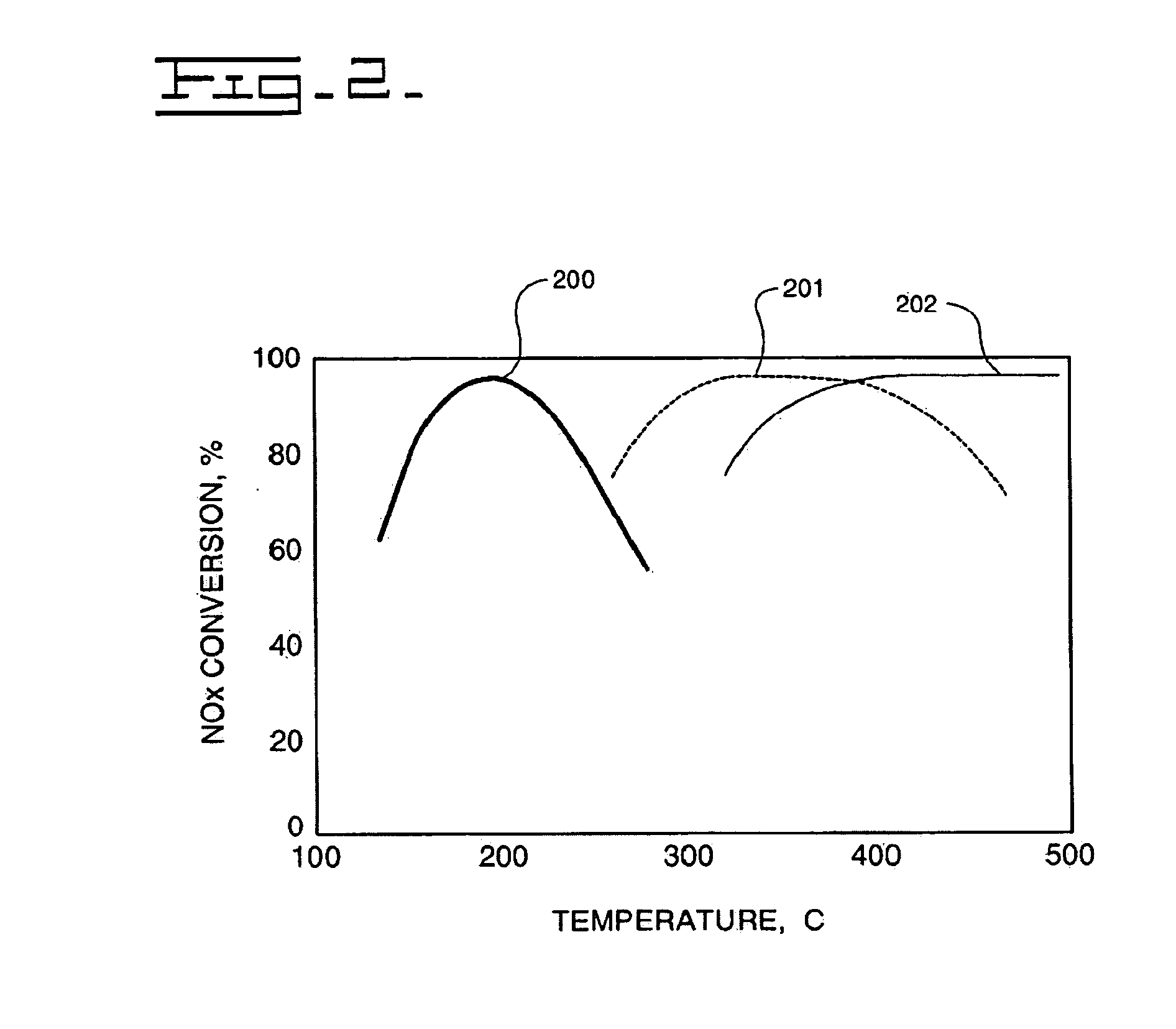Emissions reduction system
a technology of emission reduction system and exhaust system, which is applied in the direction of machines/engines, mechanical equipment, separation processes, etc., can solve the problems of increased nox, unburned hydrocarbon and soot emissions, and engine manufacturers having difficulty in designing engines that meet all the regulations
- Summary
- Abstract
- Description
- Claims
- Application Information
AI Technical Summary
Problems solved by technology
Method used
Image
Examples
Embodiment Construction
[0017]FIG. 1 illustrates an engine 10 according to an exemplary embodiment of the present disclosure. Although FIG. 1 depicts an engine 10, the reader should appreciate that the disclosed system for treating exhaust gas will apply to any exhaust stream where unwanted NOx or particulate matters are present. For example, any fossil-fuel burning power plant may also benefit from the disclosed system.
[0018]In this particular embodiment, engine 10 has intake manifold 11 and exhaust manifold 12. Intake air enters intake manifold 11 to facilitate the combustion within engine 10. Exhaust gas from the combustion process then exits via exhaust manifold 12.
[0019]The oftentimes high-temperature and high-pressure exhaust may then be used to drive a high-pressure turbocharger 20. In this case, exhaust gas drives turbine 21 to impart rotational energy to compressor wheel 22. Compressor wheel 22 is connected to turbine 21 via a common shaft. As the high-pressure exhaust drives turbine 21, the rotat...
PUM
| Property | Measurement | Unit |
|---|---|---|
| Temperature | aaaaa | aaaaa |
| Pressure | aaaaa | aaaaa |
Abstract
Description
Claims
Application Information
 Login to View More
Login to View More - R&D
- Intellectual Property
- Life Sciences
- Materials
- Tech Scout
- Unparalleled Data Quality
- Higher Quality Content
- 60% Fewer Hallucinations
Browse by: Latest US Patents, China's latest patents, Technical Efficacy Thesaurus, Application Domain, Technology Topic, Popular Technical Reports.
© 2025 PatSnap. All rights reserved.Legal|Privacy policy|Modern Slavery Act Transparency Statement|Sitemap|About US| Contact US: help@patsnap.com



